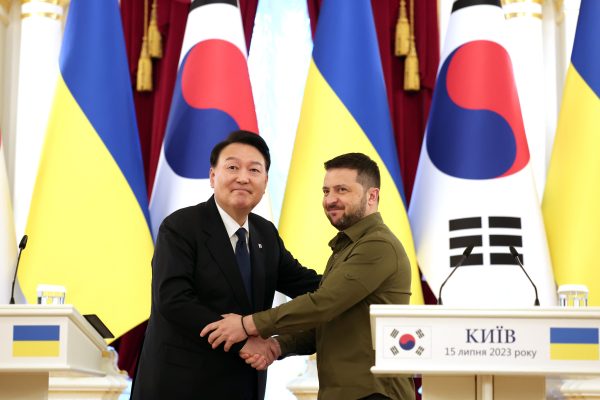JUST IN: Officials Respond to IG Reports Critical of Ukraine Equipment Sustainment Plans
Soldiers preparing Bradley Fighting Vehicles for shipment to Ukraine
Army photo
CHARLOTTE, North Carolina — A pair of recent inspector general reports stating that the Pentagon lacked sustainment plans for some of the weapon systems sent to Ukraine were “accurate and honest,” an official involved in the process said.
However, considering how “chaotic” it was at the beginning of the process, it was a “miracle” that it has worked out as well as it did, Myra Gray, deputy to the U.S. Security Assistance Command’s commanding general, said at the National Defense Industrial Association’s Tactical Wheeled Vehicles Conference Feb. 27.
“The early days of the Ukraine [war] were crazy,” Gray said. The United States has used presidential drawdowns on existing stocks rather than foreign military sales to send sorely needed weapons to Ukraine as it defends itself from Russia.
Almost two years after the invasion, Defense Department Inspector General Robert Storch on Feb. 20 released two evaluations, one on the Bradleys, Strykers and Abrams armored vehicles sent to Ukraine, and another on the Phased Array Tracking Radar to Intercept on Target, or PATRIOT, air defense system.
He found that the Defense Department had not developed or implemented a plan to sustain the weapons provided to the Ukrainian Armed Forces between January and September 2023.
“These reports concluded that without deliberate and planned sustainment support, including proper spare parts, ammunition and maintenance support, the Ukrainians would not be capable of maintaining these weapon systems in their ongoing fight against Russia’s full-scale invasion,” a press release accompanying the reports said.
“The DoD provided Ukraine with armored vehicles and air defense systems without a plan to ensure their long-term usefulness,” said Storch. “While the DoD is currently working on developing such a plan, the lack of foresight in this matter is concerning, and should be rectified promptly.”
Gray said, “The IG reported things properly. They looked at the systems and they gave a very good, honest report that is meant to help us do better,” she said.
“But I think we’re pretty dang good,” she added, defending her office’s actions in unprecedented times.
“The early days of Ukraine, it was chaos. But we were making things happen even if we didn’t solidly [understand everything] or [have] a very mature process for doing so.”
Foreign military sales come with sustainment and training plans, but not presidential directives to draw down on stocks, she noted. It had been several decades since anyone in the Pentagon was asked to do a drawdown, and Gray said she spent a weekend looking over old spreadsheets trying to figure out the process.
Today, “we have solid processes,” she said. “Now we know the responsibilities everyone has … I am amazed at how well we can do this,” she said.
As far as sustainment, she said at first tools and spare parts did not arrive at the same time. “They didn’t have everything they needed,” she said. And the Ukrainians at the time did not have the technical know-how to do sustainment, she added. Today, training takes place outside of Ukraine, which is not ideal, but has worked out, she said.
“I’m overwhelmed at how great this system has worked, given that it was so chaotic at the beginning. I consider this a major success,” she said. “And we’re not done yet.”
Tory Kessinger, assistant program executive officer for international programs in the Army’s program executive office for combat support and combat service support, said he had not read the IG reports, but noted that it has come to the point where Ukrainian soldiers are teaching the U.S. Army to do things with these weapon systems they didn’t know they could do.
“I am shocked at what the Ukrainians are actually teaching us. They are shooting guns far more than we ever shot them. They are driving our vehicles far harder than we thought we could drive them,” he said.
Topics: Global Defense Market





















Discussion about this post